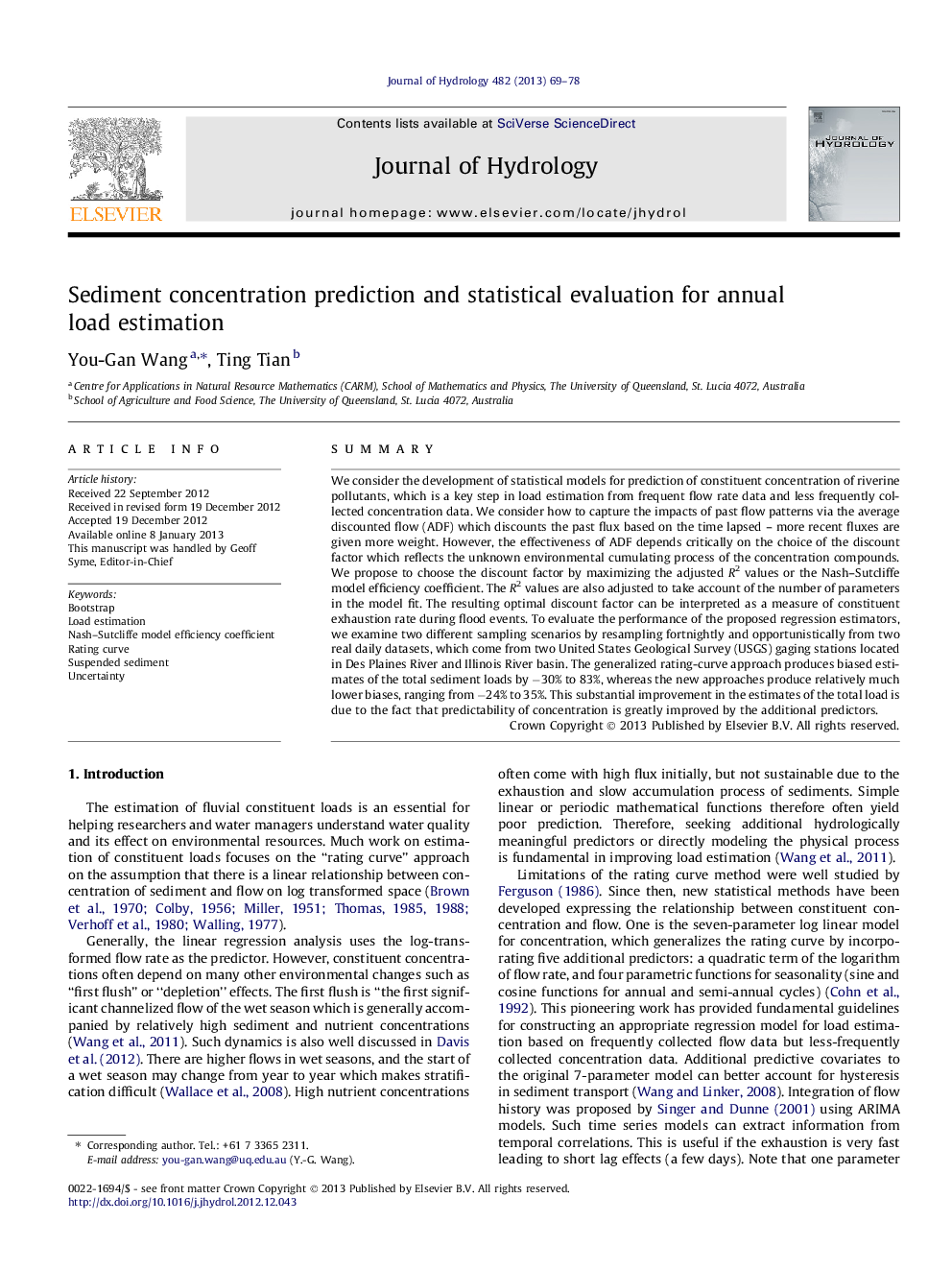| Article ID | Journal | Published Year | Pages | File Type |
|---|---|---|---|---|
| 4576459 | Journal of Hydrology | 2013 | 10 Pages |
SummaryWe consider the development of statistical models for prediction of constituent concentration of riverine pollutants, which is a key step in load estimation from frequent flow rate data and less frequently collected concentration data. We consider how to capture the impacts of past flow patterns via the average discounted flow (ADF) which discounts the past flux based on the time lapsed – more recent fluxes are given more weight. However, the effectiveness of ADF depends critically on the choice of the discount factor which reflects the unknown environmental cumulating process of the concentration compounds. We propose to choose the discount factor by maximizing the adjusted R2 values or the Nash–Sutcliffe model efficiency coefficient. The R2 values are also adjusted to take account of the number of parameters in the model fit. The resulting optimal discount factor can be interpreted as a measure of constituent exhaustion rate during flood events. To evaluate the performance of the proposed regression estimators, we examine two different sampling scenarios by resampling fortnightly and opportunistically from two real daily datasets, which come from two United States Geological Survey (USGS) gaging stations located in Des Plaines River and Illinois River basin. The generalized rating-curve approach produces biased estimates of the total sediment loads by −30% to 83%, whereas the new approaches produce relatively much lower biases, ranging from −24% to 35%. This substantial improvement in the estimates of the total load is due to the fact that predictability of concentration is greatly improved by the additional predictors.
► Proposed data dependent procedure for constructing covariates using flow history. ► Carried out resampling from real data to quantify the performance of estimators. ► Evaluated two different designs, uniform sampling and opportunistic sampling. ► Using the Nash–Sutcliffe model efficiency coefficient but adjusted by the number of parameters for model selection. ► Concluded that the new procedure can significantly improve the predictability.
